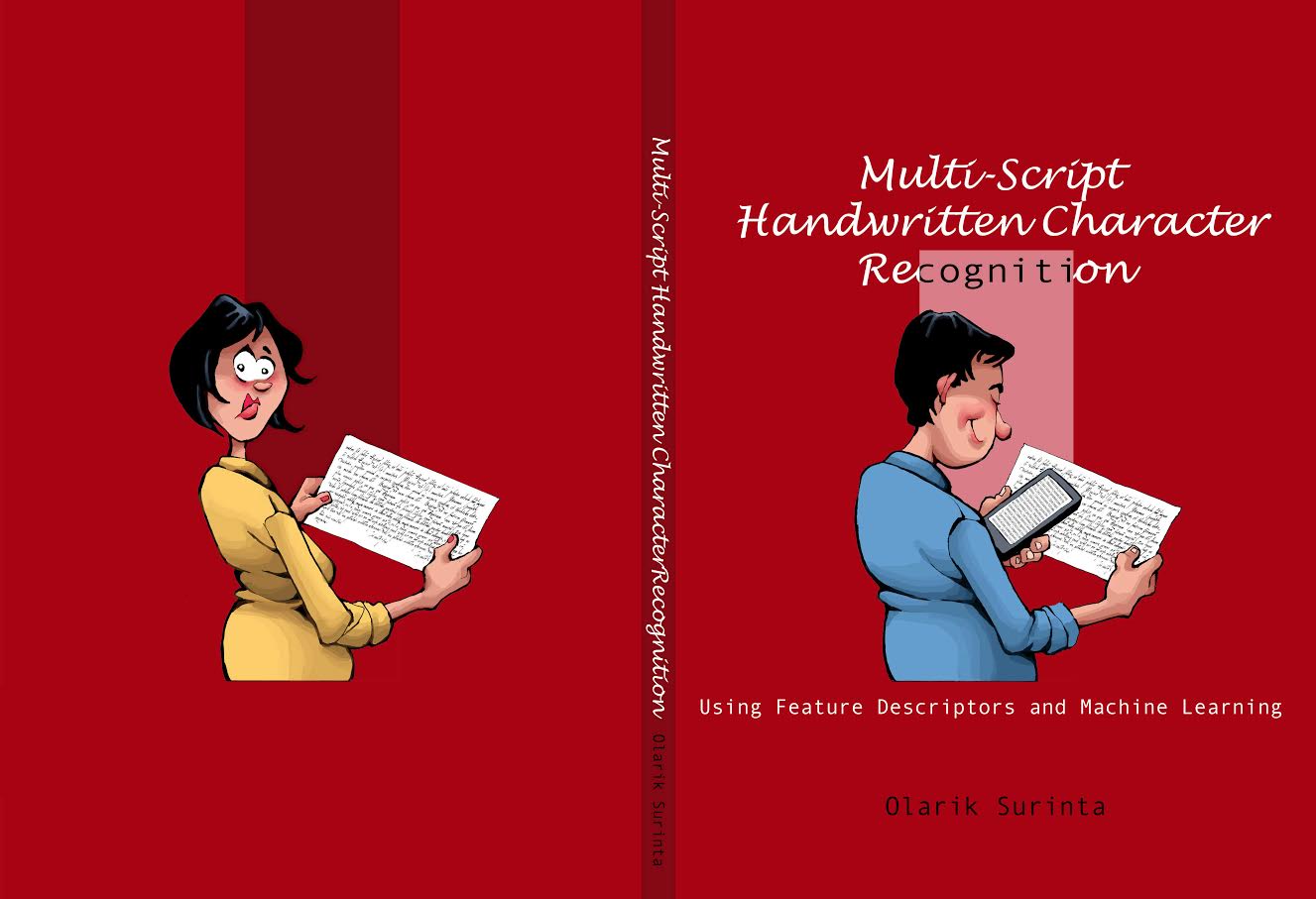
"Working at the frontiers of knowledge", RUG
Multi-Script Handwritten Character Recognition Using Feature Descriptors and Machine Learning
Dissertation by Olarik Surinta (โอฬาริก สุรินต๊ะ), University of Groningen, September 2016. ISBN: 978-90-367-9149-5 (printed) / 978-90-367-9149-6 (electronic). Defended on September 23, 2016, in Groningen, the Netherlands. Promotor: Prof.dr. L.R.B. (Lambert) Schomaker Supervisor: Dr. M.A. (Marco) Wiering cover designed by Pluis
cover designed by Pluis
| Abstract |
Multi-Script Handgeschreven Karakter Herkenning met behulp van Kenmerk Descriptoren en Machinaal Leren
| Abstract (Dutch) |
Propositions
- The goal in multi-script handwritten character recognition is to achieve a high recognition performance on isolated handwritten characters from different scripts. – Chapter 1, this PhD thesis –
- If a number of appropriate cost functions have been designed, the original A* path-planning
algorithm can move through overlapping or connected text areas instead of moving around. – Chapter 2, this PhD thesis –
- Outputs of different classifiers can be combined and classified by the unweighted majority vote
method, which results in high accuracies on isolated handwritten character datasets. – Chapter 3, this PhD thesis –
- In our isolated handwritten character datasets, the best feature descriptors achieve high
recognition performances on challenging handwritten datasets with a simple classifier. – Chapter 4, this PhD thesis –
- Some feature extraction methods are able to capture the necessary information from the character
images, which makes them important for a recognition algorithm. – Chapter 4, this PhD thesis –
- The combination of local feature descriptors and the bags of visual words approach gives the
highest recognition performances. – Chapter 5, this PhD thesis –
External links
Citation
BibTeX
@phdthesis{726cd3bc1c654bf4a38afac572abfe0e,
title = "Multi-script handwritten character recognition:
Using feature descriptors and machine learning",
author = "Olarik Surinta",
year = "2016",
isbn = "9789063791465",
publisher = "University of Groningen",
}